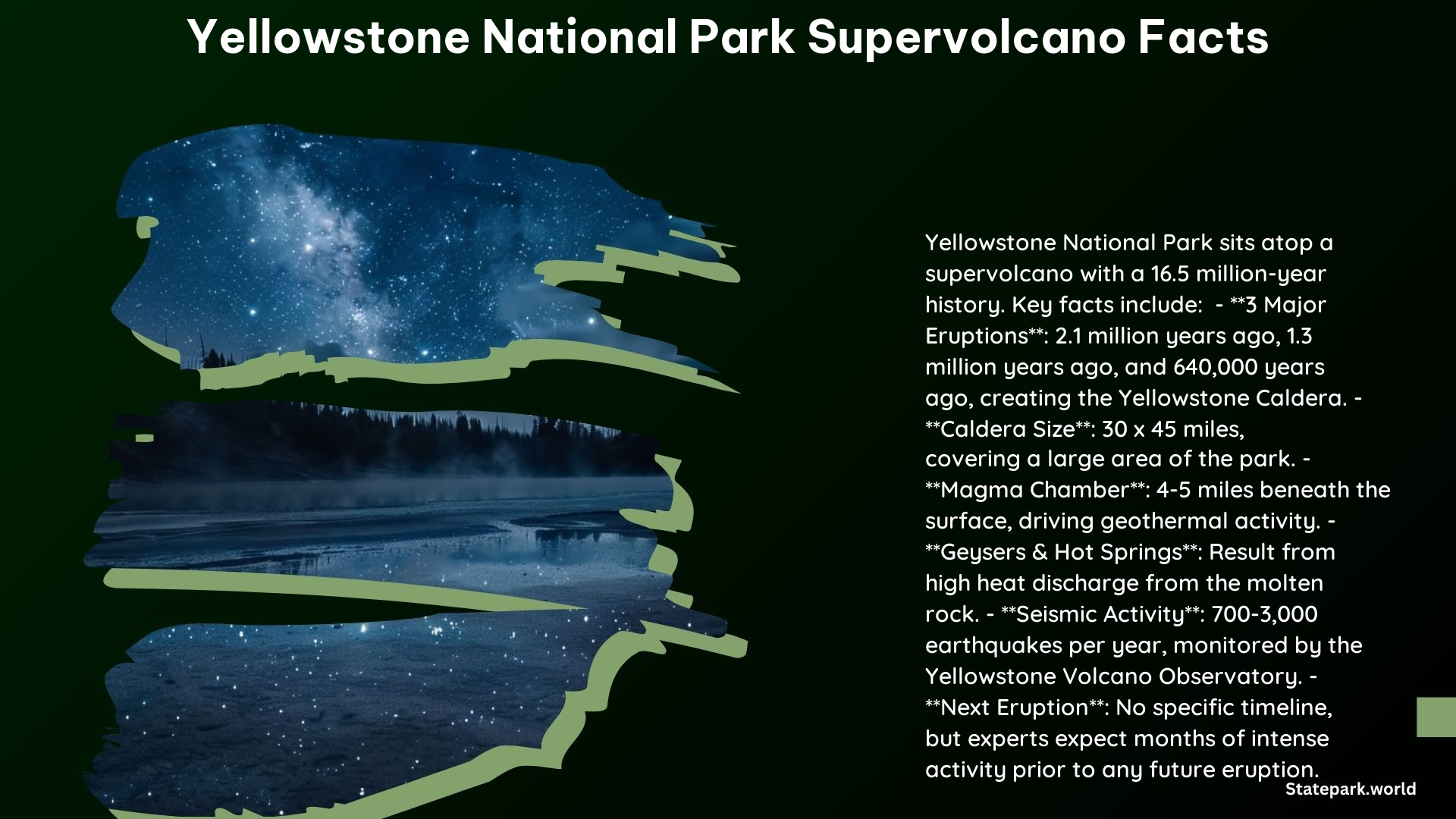Yellowstone National Park is home to a supervolcano known as the Yellowstone Caldera. This supervolcano has a massive magma chamber and has erupted multiple times in the past, with the potential for future eruptions. In this blog post, we’ll explore the key facts about the Yellowstone supervolcano.
Size of the Magma Chamber
The magma chamber beneath Yellowstone National Park is approximately 46,000 km³ in size, extending from the mantle plume to the upper crust. This massive chamber is responsible for the volcanic activity and geothermal features found throughout the park.
Past Eruptions

The Yellowstone supervolcano has erupted three times in the past 2.1 million years:
- 2.1 million years ago (Huckleberry Ridge eruption): This was the largest eruption, producing 2,500 times more ash than the 1980 Mount St. Helens eruption.
- 1.3 million years ago (Mesa Falls eruption): This eruption formed the Henry’s Fork Caldera and produced the Mesa Falls Tuff.
- 640,000 years ago (Lava Creek eruption): This eruption formed the Yellowstone Caldera and produced the Lava Creek Tuff.
In addition to these major eruptions, there have been more than 60 smaller eruptions since the last major eruption, with the most recent lava flow occurring about 70,000 years ago.
Current Activity
The Yellowstone supervolcano is still active, with ongoing geothermal activity and ground-swelling indicating inflation of the magma chamber. The Yellowstone Volcano Observatory (YVO) closely monitors the volcano for signs of increased activity, including earthquakes, ground deformation, and temperature changes.
Potential Future Eruptions
While it is impossible to predict exactly when the next eruption will occur, scientists expect that the Yellowstone supervolcano will erupt again in the future. However, there is no indication of an imminent eruption.
Impact of Eruptions
A major eruption of the Yellowstone supervolcano would have significant global consequences, including massive ash clouds, climate disruption, and widespread destruction. The sheer size and power of this supervolcano make it a subject of intense scientific study and monitoring.
In conclusion, the Yellowstone National Park supervolcano is a fascinating and potentially dangerous natural wonder. By understanding its history, current activity, and potential future eruptions, we can better prepare for and mitigate the impact of this geological phenomenon.
References:
– Wikipedia – Yellowstone Caldera
– My Big Horn Basin – Yellowstone Supervolcano Eruption: 6 Facts About the Yellowstone Caldera
– Yellowstone.org – Yellowstone Supervolcano Revealed
– National Park Service – Volcano
